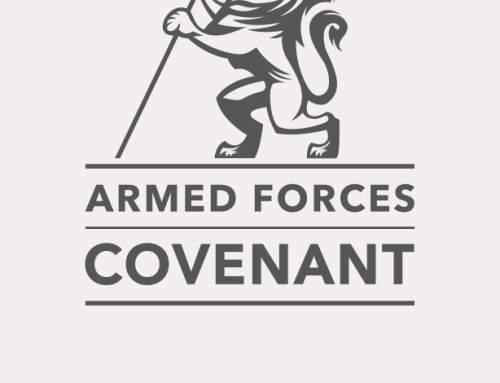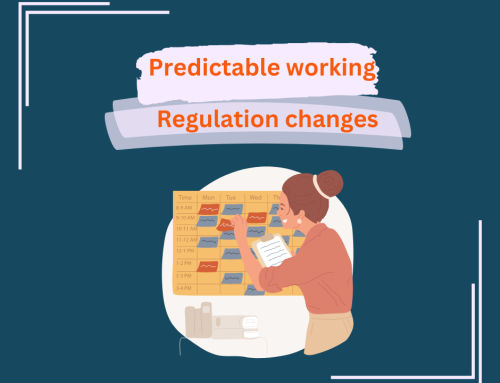You might see our Managing Director, Richard, turn up to an appointment by car, on foot, on his bike or even on a kick scooter. Three mornings a week you can find him swimming at the local pool and twice a week you can spot him on a badminton court. And, as of summer 2019, you might also occasionally spot him propelling himself in a wheelchair.
In this blog he illustrates how not all disabilities are visible, how adaptions can greatly improve quality of life and what he has learned from his experiences on four (rickety) wheels.
When I developed compartment syndrome in all four compartments of both my calves, my lifelong dream of serving in the army was crushed. It started while training at the Royal Military Academy Sandhurst and, as it’s not a visible condition, my instructors initially thought I was malingering and therefore pushed me harder. I think that experience trained me to hide signs of pain and discomfort, and that’s why so many people I know well have no idea that I have a chronic pain condition: when the pain is bad you might notice I become quieter and more withdrawn. When it’s really bad, I sometimes compensate by being extra jolly, until I can get home and crash!
Compartment syndrome is a hardening of the fascia of the muscles, which means when one exercises and blood flows into the muscle there is no way for it to expand, and therefore pressure very quickly builds, often to a barely tolerable level.
Pressure tests in my legs showed an unusually high amount of pressure, even for people with compartment syndrome. Although I’m in constant discomfort, ten minutes of walking, standing or sitting in one position can lead to high levels of pain.
5 years ago, after two failed sets of surgeries (which resulted in nerve damage and scarring which adheres my muscles to my calves) my consultant agreed that we would stop looking for a cure, accept compartment syndrome as a life-long condition and focus on pain management.
I was surprised to find that this was a very positive turning point for me. Accepting this outcome helped me to feel more at peace and positive about moving forward. I was officially declared ‘Disabled’ and this provoked us as a family to consider how we would adapt our lives in order to better manage my condition.
It started with choosing different activities- shorter family outings with regular breaks, more trips to the sea (cold saltwater has an amazing impact in reducing my pain) and cutting down on long car trips. While running was completely out of the question, the pain for sports like badminton remained manageable as it involves dynamic, rather than repetitive, movement.
I invested in regular physio sessions and started to bring a walking stick with me for long days out. It wasn’t to aid my mobility – I use it as an outward marker of my disability. Without it, people glare at me when my wife cedes the last seat on the bus to me or when I elevate my legs on a bench to try to alleviate the pressure when the pain is particularly bad. It can be pretty humiliating and unpleasant to experience.
Managing my pain was also a significant influence in launching our business. I looked forward to having the opportunity to attend my doctor’s appointments without requesting leave and having to evidence how I was making up the time. Banter from colleagues about how I was being ‘lazy’ when I elevated my legs at my desk after an appointment cut close to the bone. And I really didn’t like wearing suits! Because of the nerve damage in my legs, the light fabric of smart trousers is very uncomfortable for me. I’m just – if not more – professional when I wear heavyweight jeans or shorts, because I am not distracted by the horrible pins and needles sensation caused by wearing a suit.
Since launching Talbot Jones Ltd my pain levels have been much more manageable and together, as a family, we have settled into a much better lifestyle for managing my pain.
As an employer and colleague, it has now led to me to reflect on how to support those in our workplace to meet their needs. Aside from the minimum legal requirement about making reasonable adjustments for those we work alongside, how can we make them feel respected and empowered to manage their needs with confidence and understanding?
This summer we planned a holiday to Paris. My wife was keen to show us around the city and explore the different sights and monuments I’ve always been eager to see. Unfortunately, my condition means I can manage about 20 minutes walking before I become withdrawn and then grumpy, and this wouldn’t make for enjoyable sightseeing tours for any of us!
Clare suggested I brought a wheelchair.
This is something I’d refused to countenance for years. Initially, the idea of accepting that I really am a ‘disabled person’ was bitter for me to accept, but also, I worried what people would think – not because they’d think less of me for having a disability, but because they might think I had no need for it.
But, keen to explore Paris for more than my one-hour walking limit and comforted by the anonymity of a foreign city, I agreed to give it a go.
The medication I am on led to me gaining 3 stone, which I have not been able to shed, despite the regular sport I do. We’ve recently moved office in an attempt increase my activity levels, as it’s in walking/cycling distance from our home for me. With the wheelchair I hope to be able to keep up with my active family but using my arms to propel myself in a chair, rather than walking. Although Clare was on hand to help push me over particularly difficult terrain and up particularly steep slopes, the aim is for me to propel myself as much as possible.
We had a really fantastic week, averaging 11 or 12 miles a day walking and wheeling round Paris. It was a great workout for me, but also allowed me to enjoy the experience with my family in ways that would not have been possible without the wheelchair.
It was a very illuminating experience, however, and I’m keen to share some of the observations I made about the challenges people who are bound to a wheelchair might face and how we can better help and support them.
- Always keep accessibility in mind
Wheeling around Paris was a HUGE challenge! Fortunately for me I was able to hop right out of my chair and walk around Napoleon’s tomb and the Concergerie, but it was a surprise that in many places there were no modifications, like ramps, available to allow access to those fully reliant on wheelchairs.
Rough pavement surfaces, potholes, raised kerbs, cobbled areas, sandy patches, temporary signs, badly parked cars and cones all presented challenges and obstacles I normally wouldn’t have noticed.
In several instances, roadwork cordons meant that there was no safe path to cross busy lanes of traffic.
Cafes, restaurants and communal areas were packed tightly with chairs and artfully placed stools which were impossible to navigate independently (or often even with help).
In order to be inclusive, it is important that disability access is considered at all stages of planning.
- Be inclusive and respectful
What would he like to drink? Is he looking for the elevator? Can he come through this door? Yes, I appreciate that it might feel more natural to talk to someone who’s at face level, but it was frustrating that when people had questions for me, they asked Clare.
I’m going to be much more aware of trying to engage directly with people, instead of dismissing them because of their apparent disability.
- Give people the space and time they need
Wheeling a chair is hard work! Getting around requires a lot more thought, concentration and planning than walking around. You need space to turn or back up. Mounting the kerb sometimes requires quite a ‘run up’ (or rather ‘wheel up’!) in order to gain sufficient momentum. ‘Nipping in front’ of someone in a wheelchair is really frustrating and can be dangerous- a few times I had to brake hard and was left in the road with oncoming traffic coming quickly towards me. And climbing over someone in a wheelchair because it’s crowded, and they don’t have a clear path to move forward is plain rude!
When you give someone the time and space they need they it allows them to be independent, productive…and safe!
- Be prepared to offer help
I was really grateful to the man who saw me struggling up a slope and the man who saw me in trouble crossing a busy road who stopped and asked if they could help.
I know myself we can worry about offending or patronizing other people but offering help when someone is clearly in need will almost certainly be the right thing to do. (Just grabbing someone’s chair and giving them a push will almost always be the wrong thing to do.)
- Make reasonable adjustments
On arrival at Paris airport I sat in my wheelchair for the first time and immediately was ushered straight through the long, zig-zagged line at passport control and straight to the front. The same thing happened at the museums and monuments we visited. Initially I tried to decline and felt uncomfortable, however I quickly came to appreciate it.
Life in a wheelchair is much harder to negotiate and MUCH slower. It’s also more expensive. When faced with a tall, grand staircase to exit a park, after struggling through the uneven terrain, it was a daunting prospect to find an accessible route. Fortunately for me I was able to hop out of my chair and carry it to the top. But what about those who are fully reliant on wheelchairs? Elevators can have a looong wait in busy public buildings. Most metro stations were inaccessible and when buses arrived the doors opened several feet from the disability ramp. With all these extra time and energy consuming challenges, the extra considerations went some way towards making the experience a bit easier.
Accessibility experts such as Dean Reynolds, Sight Service and Empowerment Consultancy and Training CIC can help businesses understand how to make their services more accessible to a wider audience. Get in touch with them to help your business take practical steps to develop a more inclusive approach.
- Remember that not all disabilities are visible
For many people, it is hard to show vulnerability and ask for help. It really is appreciated when people are understanding, accepting and accommodating of different needs, capacities and abilities.
As hard as this article has been to write, we hope that by sharing our experiences of managing a disability we can help, in a small way, to be part of the growing dialogue around diversity and inclusion. How can we all support people of all abilities to fully access, engage in and contribute to our workplaces and society to the fullest, so we can benefit from the wealth of experiences, knowledge and different perspectives of all our community?
That’s the challenge. Let’s take action to make it happen!
Find out more about what Richard’s time in the Army and Army Reserves brings to his role as an insurance broker (here) or what we learned from the Thought Foundation Let’s Discuss Disability exhibition.
Talbot Jones Ltd is a chartered insurance brokerage specialising in Third Sector, Professional and Technology risks. Get in touch for a free insurance review, advice or quotation.






What a great post Richard – if you ever need anything when you’re down south, it would be great to catch up again.
Hi Simon, thank you for reading, commenting and staying in touch!
A very informative and enlightening article. It certainly made me think.
Hi Greg, I’m glad you found this interesting – thank you for reading and commenting!
Thank you Richard. I too am having to come to terms with a progressive disability and my experience resonates strongly. Learning to accept that you are a disabled person and learning to accept help from others are two significant hurdles to overcome! I wish you well on your personal journey.
Hi Ian, so great to hear from you! Sorry to hear that you’re in a similar position. I think finding out that there wasn’t anything else that could be done medically and knowing then that I would just have to learn to cope and adapt was both crushing, and freeing at the same time.